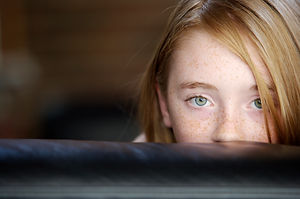
Trauma and attachment informed family placements for children and young people with complex needs


Attachment, Disorganised Attachment & Trauma
The concept of attachment originated in the work of psychiatrist John Bowlby, and it provides us with a powerful framework within which to understand the development and behaviours of children who have not experienced secure early relationships, as well as the potential for foster care and new attachment relationships to act as a therapeutic environment.
Human beings are extremely vulnerable at birth, and we are biologically programmed to seek proximity to a caregiving adult who will keep us safe, meet our needs and provide a consistent, secure base from which we can explore the world around us. The successful formation of such a relationship is incredibly important for the child. It lays the foundation for healthy physical and emotional development, and it creates the blueprint for all of our future relationships with other people, our ‘internal working model’.
If the caregiver is rejecting of the child or insensitive to the child's needs, the child can develop an avoidant style of attachment, and becomes emotionally self-sufficient in order to avoid rejection. If the caregiver is inconsistent in response to the child's needs (i.e. sometimes meeting them, sometimes not) the child can develop an ambivalent style of attachment, becoming demanding but also distrustful as a result of such uncertainty.
If the caregiver is also frightening, or frightened, the child experiences 'fear without solution' (Main & Hesse, 1990) - the caregiver whom the child must seek to provide safety is also the source of the child's fear. Children who live in very frightening and abusive environments can develop disorganised attachments - they simply don't have an organised 'strategy' to provoke appropriate caregiving behaviours in the adult. Over time, children with disorganised attachment can become highly controlling in order to feel safe. Their feelings of overwhelming anxiety and fear remain unresolved (without intervention), and these children can be very challenging and even frightening for subsequent adults to care for.
Having a solid understanding of attachment is therefore essential for therapeutic foster carers and other staff supporting traumatised children. Many of our young people have been traumatised within their early relationships with primary caregivers, and the successful development of emotional intelligence can only take place within a healthy, secure attachment relationship.
These interwoven issues are complex, and every child requires an individual therapeutic care plan in order to adequately assess and respond to their needs. Ongoing training and high levels of support are necessary in order to properly equip carers to successfully care for some of the most damaged and vulnerable children in the care system.
In addition to agency training opportunities, we have found the following books useful in acquiring a grounding in attachment theory, and how it relates in practical terms to the parenting of traumatised children and young people:
Downloads
Dr Dan Siegel talking about Disorganised Attachment for psychalive.org
Dr Siegel, clinical professor of psychiatry at the UCLA School of Medicine.
For more information visit:
Book List (available to all foster carers and other Phoenix staff via the Resource Library)
-
Schofield, G. & Beek, M. (2006) Attachment Handbook for Foster Care and Adoption, London: BAAF
-
Shemmings, D. & Shemmings, Y. (2011) Understanding Disorganized Attachment: Theory and Practice for Working with Children and Adults, London: Jessica Kingsley Press
-
Howe, D. (1995) Attachment Theory for Social Work Practice, Hampshire: Palgrave
-
Golding, K. S. (2008) Nurturing Attachments: Supporting Children who are Fostered or Adopted, London: Jessica Kingsley Press
-
Perry, A. (Ed.) (2009) Teenagers and Attachment: Helping Adolescents Engage with Life and Learning, London: Worth Publishing Ltd
-
Howe, D. et al (1999) Attachment Theory, Child Maltreatment and Family Support: A Practice and Assessment Model, Hampshire: Palgrave Macmillan
-
Hughes, D. A. (2009) Attachment-Focused Parenting: Effective Strategies to Care for Children, New York: Norton
-
Hughes, D. A. (1997) Facilitating Developmental Attachment: The Road to Emotional Recovery and Behavioural Change in Foster and Adopted Children, Maryland: Rowman & Littlefield Publishers Inc
-
Geddes, H. (2006) Attachment in the Classroom: The links between children's early experience, emotional well-being and performance in school, London: Worth Publishing Ltd
-
Taylor, C. (2010) A Practical Guide to Caring for Children and Teenagers with Attachment Difficulties, London, Jessica Kingsley Press
-
Hughes, D. A. (2006) (2nd ed.) Building the Bonds of Attachment: Awakening Love in Deeply Troubled Children, Maryland: Rowman & Littlefield Publishers Inc
-
Howe, D. (2005) Child Abuse and Neglect: Attachment, Development and Intervention, Hampshire: Palgrave Macmillan
-
Bombèr, L. M. (2007) Inside I'm Hurting: Practical strategies for supporting children with attachment difficulties in schools, London: Worth Publishing Ltd
-
Stoller, J. L. (2006) Parenting Other People's Children: Understanding and Reparing Reactive Attachment Disorder, New York: Vantage
-
Cairns, K. (2002) Attachment, Trauma and Resilience: Therapeutic caring for children, London: BAAF
-
Levy, T. M. & Orlans, M. (1998) Attachment, Trauma, and Healing: Understanding and Treating Attachment Disorder in Children and Families, Washington: CWLA Press